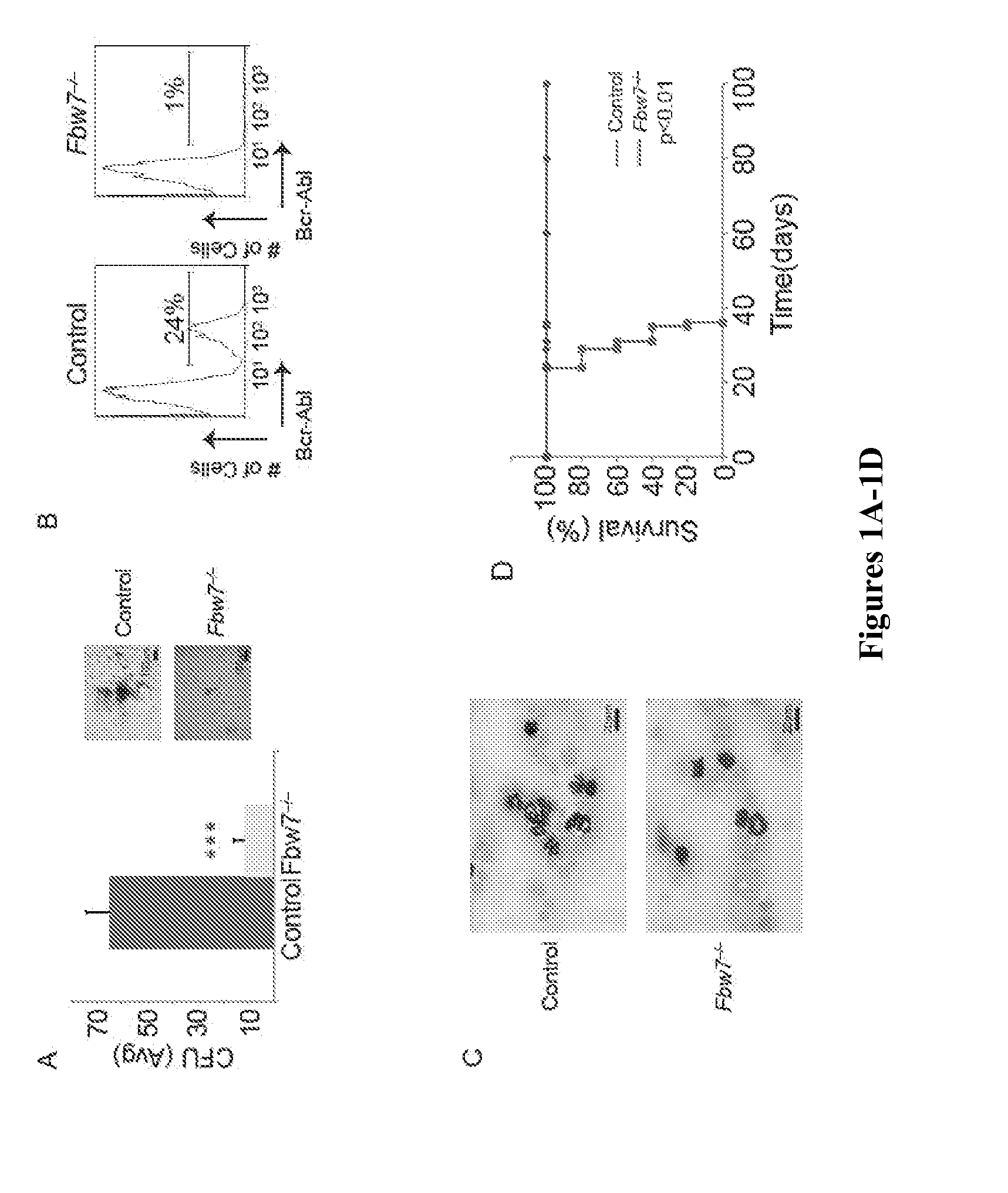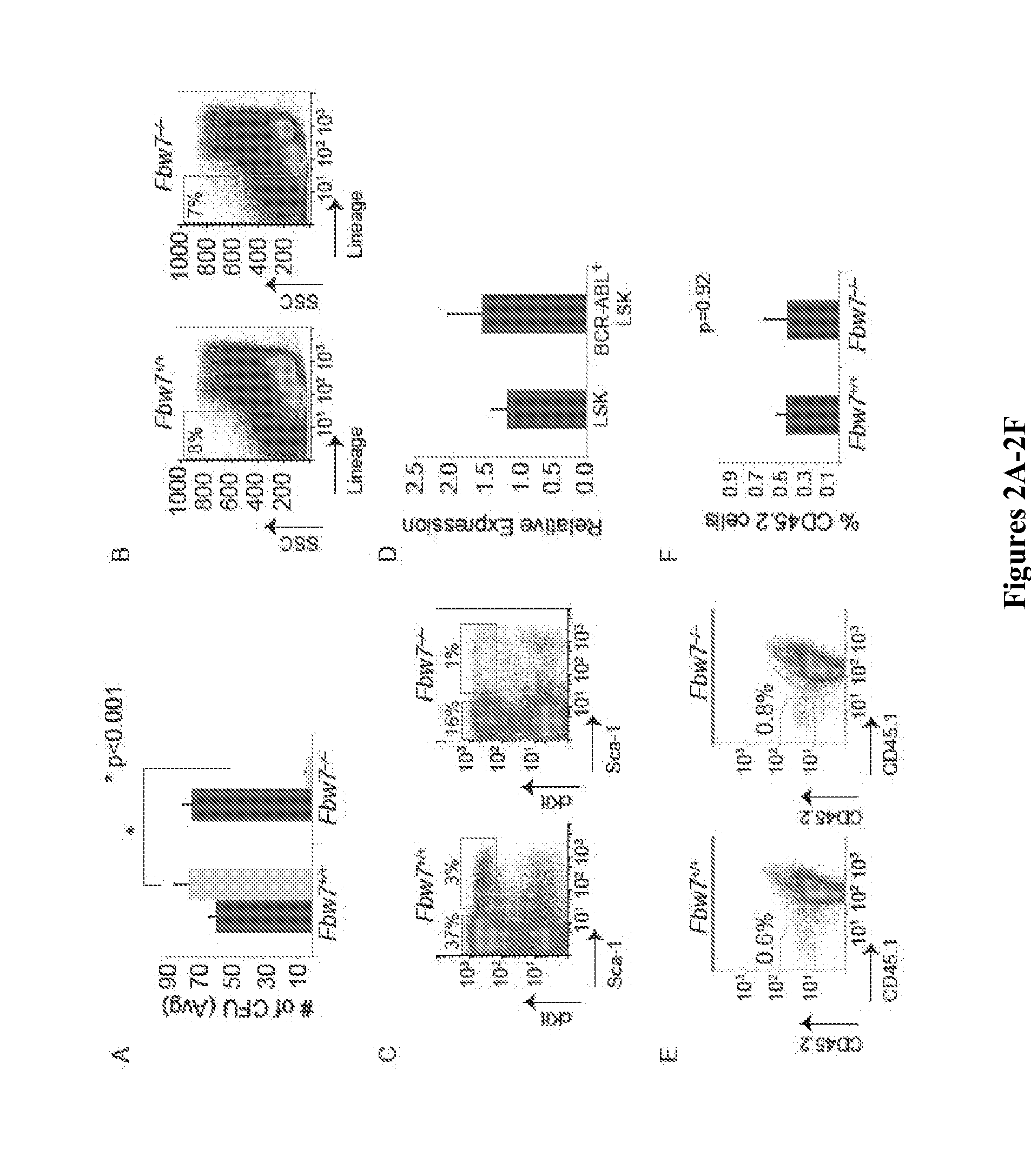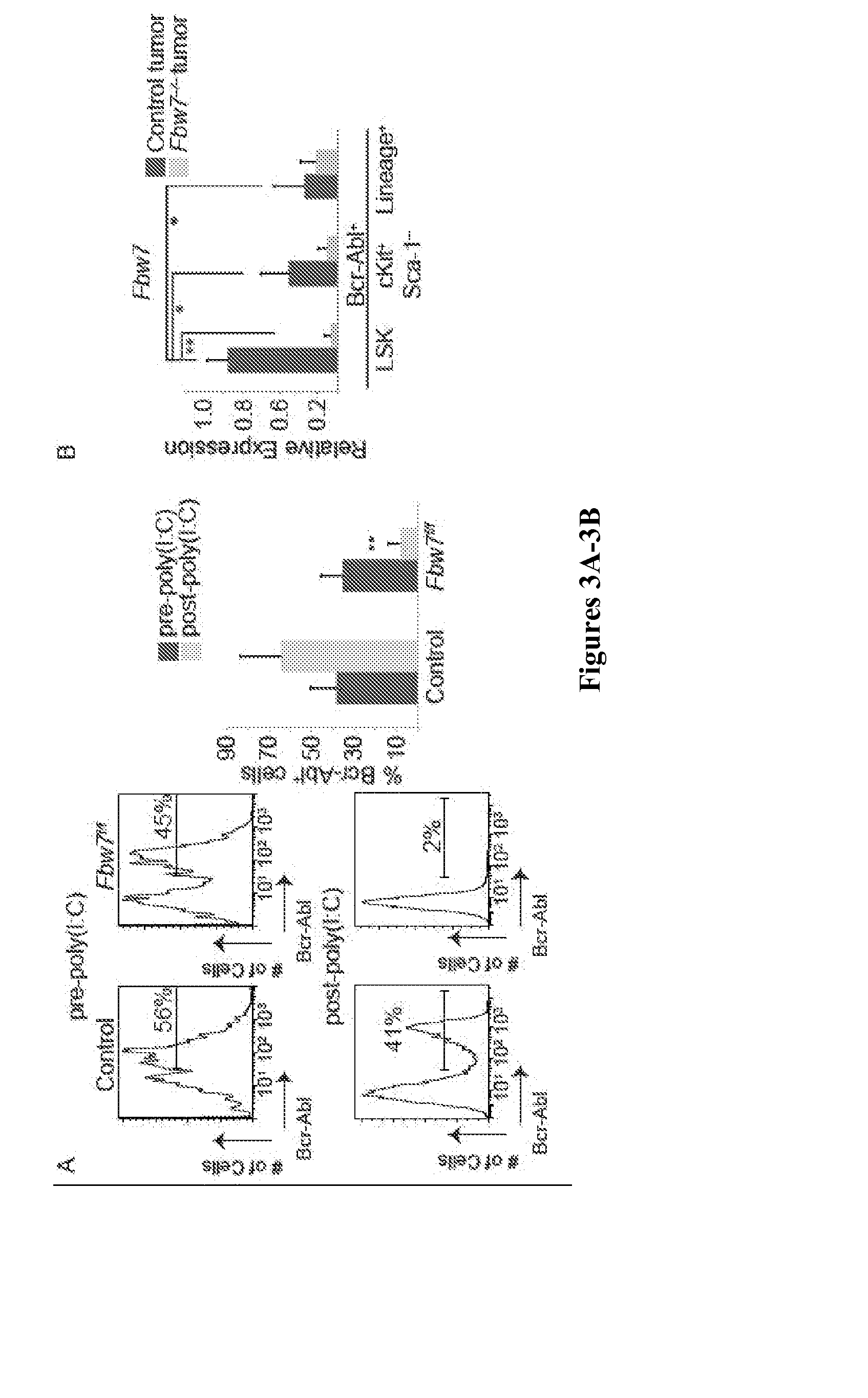INHIBITION OF c-MYC UBIQUITINATION TO PREVENT CANCER INITIATION AND PROGRESSION
a technology of ubiquitination and c-myc, which is applied in the direction of drugs, peptide/protein ingredients, and treatment, can solve the problems of compound being unable to target the initiating population of cml, and the imatinib-treated patient's remission is long-term, so as to reduce the number of circulating tumor cells, reduce the size of the spleen, and reduce the incidence of leukemic cell infiltration
- Summary
- Abstract
- Description
- Claims
- Application Information
AI Technical Summary
Benefits of technology
Problems solved by technology
Method used
Image
Examples
example 1
Fbw7 Deletion is Able to Suppress Initiation of Bcr-Abl-Induced CML
[0109]To address the role of Fbw7 in the self-renewal and differentiation of leukemia-initiating cells a well-established animal model of chronic phase Bcr-Abl-induced CML was utilized (Daley et al., “Blast Crisis in a Murine Model of Chronic Myelogenous Leukemia,”Proc. Nat'l. Acad. Sci. U.S.A. 88:11335-11338 (1991); Neering et al., “Leukemia Stem Cells in a Genetically Defined Murine Model of Blast-Crisis CML,”Blood 110:2578-2585 (2007); Pear et al., “Efficient and Rapid Induction of a Chronic Myelogenous Leukemia-Like Myeloproliferative Disease in Mice Receiving P210 bcr / abl-Transduced Bone Marrow,”Blood 92:3780-3792 (1998), which are hereby incorporated by reference in their entirety). In this model, Bcr-Abl expressing retroviruses are used to infect highly-purified hematopoietic stem and progenitor cells, Lineagenegc-Kit+Sca1+ (LSK). Transduced LSKs are then transplanted into lethally irradiated congenic hosts, w...
example 2
Fbw7 Deletion is Able to Suppress Bcr-Abl-Induced Disease Progression
[0111]These experiments address effects of Fbw7 on transformation but do not study its role during progression of CML in vivo. To experimentally address this question Fbw7f / f mice were crossed to Mx1cre mice, which Cre-recombinase is active as early as the HSC stage upon administration of polyI-polyC (Mx1cre+Fbw7f / f). This allows for gene deletion after the onset of the disease. In these experiments CML was established by Bcr-Abl-expressing Mx1cre+Fbw7f / f and littermate control Bcr-Abl-expressing LSK cells. Disease onset was verified by flow cytometry 7 days post-transplantation (FIG. 3A). Fbw7 gene deletion was achieved by three polyI-polyC injections and confirmed by quantitative reverse transcriptase PCR (qRT-PCR) analysis (FIG. 3B). Notably, tumor LSKs expressed the highest levels of Fbw7 when compared to more differentiated subsets (FIG. 3B). Similar to previous observations, control recipients developed CML a...
example 3
Fbw7 Deficient Bcr-Abl Cells have No Leukemia-Initiating Activity In Vivo
[0112]To directly test the self-renewal capacity of the LIC fraction, secondary transplantation experiments were performed using whole spleen cells isolated approximately 10 days after polyI-polyC-treatment from Mx1cre+Fbw7− / − and littermate controls, respectively. To ensure that identical numbers of Bcr-Abl+ LSKs were transplanted in both cohorts, the total number of spleen cells was normalized based on the frequency of Bcr-Abl+ LSK cells determined by FACS analysis. Disease onset and progression were subsequently studied. In agreement with the previous findings, recipients of Fbw7− / − tumor cells did not develop CML (FIG. 4A). In contrast, control Bcr-Abl+ cells harbored LIC activity when transplanted into secondary recipients and transferred disease exhibiting the same hallmarks as the primary CML (FIGS. 4B-4D) and rapidly (≦30 days) led to lethal CML (FIG. 4E). No effects on the viability of hosts that recei...
PUM
| Property | Measurement | Unit |
|---|---|---|
| Cell angle | aaaaa | aaaaa |
| Therapeutic | aaaaa | aaaaa |
| Cell proliferation rate | aaaaa | aaaaa |
Abstract
Description
Claims
Application Information
 Login to View More
Login to View More - R&D
- Intellectual Property
- Life Sciences
- Materials
- Tech Scout
- Unparalleled Data Quality
- Higher Quality Content
- 60% Fewer Hallucinations
Browse by: Latest US Patents, China's latest patents, Technical Efficacy Thesaurus, Application Domain, Technology Topic, Popular Technical Reports.
© 2025 PatSnap. All rights reserved.Legal|Privacy policy|Modern Slavery Act Transparency Statement|Sitemap|About US| Contact US: help@patsnap.com



